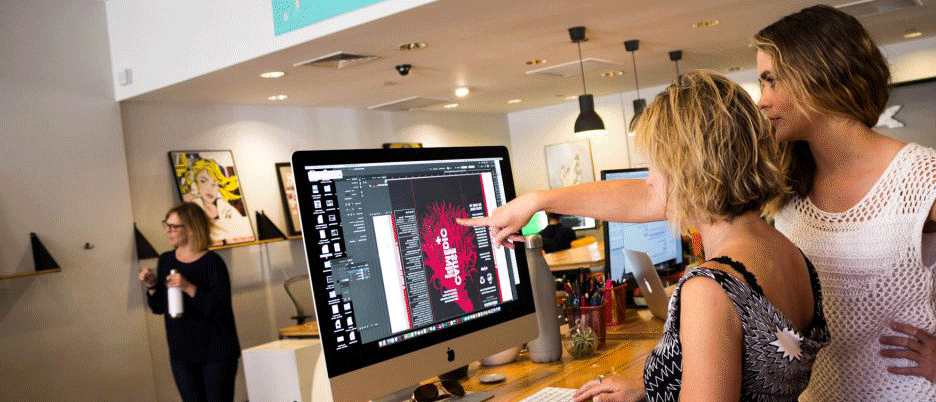Social addictions.
Nothing gets our inspiration flowing like a good, juicy blog post. Read about what we’ve been working on (our latest launches), what we can’t stop thinking about (design trends, industry happenings and new partnerships) and what we think you should know (expert branding insights and probably some stuff about dogs).
Check back often—we’re quite chatty when we want to be.
Post-COVID: How agencies are getting away from the traditional brick and mortar studio model
2020 saw a massive shift in, well, everything. As COVID-19 spread across the globe many cities issued shelter-in-place orders in an effort to curb transmission of the virus among its populations. Almost instantly, previously packed city streets and offices became quiet, eliciting a feeling of the uncanny formerly reserved for surrealist art. Many businesses were forced to close their doors to the public while office buildings and studios lay vacant as the acronym WFH (Work From Home) became commonplace in our vocabulary along with the phrase “unprecedented times” being beaten into us in an attempt to sell anything from pizza to cars.
With the times slowly becoming “precedented” again a lot of companies are looking at WFH as more of a permanent solution rather than a temporary setback. A big part of this push is coming from the tech industry with jobs in development, it’s curious to see how remote work affects the creative process in a highly collaborative field. Now many are wondering whether it’s the future of the design industry. There are certainly both positive and negative aspects to working remotely and creative agencies–both in Boulder, CO–and all over the world–will need to adapt to the changing workflow of the graphic design industry.

Larger Talent Pool
One pro to going remote is having a larger talent pool of designers to work with, especially when working with different clients in diverse industries. As the digital world gets bigger, an agency or studio is not limited to its local market to find designers with the most talent and best fit for the company. This also leads to an increase in diversity where you can source creative teams and individuals of varying experiences and backgrounds to bring ideas to the table. Having multiple perspectives “in the room” helps to foster creative and innovative concepts and design solutions.
“The Room”
There are certainly benefits to a globally diverse group and there are plenty of tools to foster remote collaborative thinking. We’re all basically Zoom experts by now. Even so, there’s something to be said about having your team in the same room. It creates an environment that promotes human interaction, connection, comradery and constructive feedback. It’s easier to clearly communicate ideas in person and less awkward when presenting and critiquing work. Having two people try to talk at the same time is somehow 10 times more awkward over Zoom.
Work/Life Balance
This is often touted as a perk of remote work. Having flexibility is great for adjusting work around everything else going on in life. Working from home can allow more time with family and more time for other activities that are important for keeping sane. The big downside is that working from home can blur the lines between work and home life. It’s wonderful having all this technology that allows us to communicate to people anywhere in the world at any time, but if you’re not careful, being available anywhere and anytime may become an expectation rather than a convenience.
There’s absolutely no doubt that the pandemic has changed the way the world works and we’re certainly going to see a lasting effect in the design and branding industry. From the type of work to the way we work, COVID is going to change the landscape of creative work. We have no doubt many design studios and creative agencies are going to move to more of a remote business model, and the type of design work needed is going to shift even more to a digital medium. Coincidentally, we love elevating brands’ digital presence!
Have a look at our interactive work and if you think we’d be a good fit together let’s have a chat.
